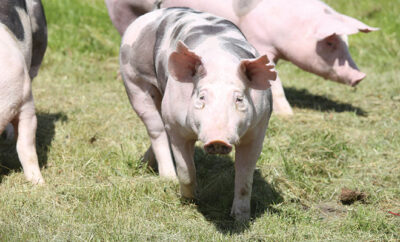
Holidays and Culinary Traditions
The northern hemisphere experiences its shortest days and longest nights of the year in the month of December. This year, December 21 marks the winter solstice. The worst of winter weather awaits, but we know that the sun will begin to rise earlier and set later each day.
Imagine, if you can, living at the dawn of time. You notice that the sun shines less day by day. At the same time the weather grows colder. Plants die, and animals hibernate. What would you do to make sure the sun did not disappear? What if everyone around you feared that the sun might never return to warm the earth?
Around the world, people dealt with their fear of losing the sun and adapted to the solstice in different ways. Whether they worshipped gods that ruled the sun or agriculture or the goddess of the Earth, every culture honored the winter solstice as a time when light overcame darkness. When a new religion, Christianity, began to spread through the civilized world, pagan celebrations gradually blended with Christian celebrations. It came to pass that Christianity celebrated the birth of Jesus Christ on December 25, the same date as one of the largest pagan celebrations that honored the god of the sun.
Sacred and secular practices continued to blend through the centuries in different traditions. Whether you celebrate this season with Christmas, Hanukkah, Yule, Diwali, Sadeh, Festivus, Kwanzaa or some other way, chances are that the celebration involves a feast. Let’s take a look at some of the foods used to celebrate this season, beginning with sweets.
There are many European holiday traditions that honor the Christmas holiday. One is the bûche de Noël, or Yule log. This unique cake is rolled, then iced with chocolate frosting to resemble the log traditionally lit on hearths during the holidays. In Germany, one confection is made from the skins of oranges, lemons and grapefruit. This candied fruit was rolled in sugar to acknowledge the season of ice and snow, with the fruit itself a reminder that the sun will triumph over the winter season.
If you or a family member loves mincemeat pie, have you wondered how it got its name? This ancient British dish was once the main meal. Originally a pie of diced, or minced, meat, usually lamb, it evolved over time into a dessert made of apples, raisins and spices.
We’ll move from dessert to breakfast, looking at savory and sweet ways potatoes are used. The celebration of Hanukkah nearly always has a meal including potato latkes. This crisp-yet-dense potato pancake is a memorable cross between hash browns and pancakes. If your ancestors hailed from Scandinavian countries, you may know how to make or where to buy potato lease. These soft, tortilla-shaped flatbreads are a Nordic tradition. Spread with jam or butter, cinnamon and sugar, they make an excellent sweet addition to any holiday brunch.
The main meal of the festive day, in many parts of Scandinavia and Europe, centered on boar or ham. This is because most family farms had a household pig that was slaughtered in the fall, with the hams being reserved for the winter feast. The meal of ham was cooked in a large pot for more than a day, with the meat and broth eaten straight from the pot with bread, which came to be known as “dip-in-the-pot.” In northern Europe, salted meat and fish, along with root vegetables, were the foundation of festive meals; they were also the foods that helped sustain families through winter into spring.
In many cultures, days of celebration and feasts often began with a period of fasting. In Europe, the traditional Christmas Eve meal before Midnight Mass was very simple; in Provence, France, it was called the “souper maigre,” or meager meal. A plain, meatless supper was accompanied with water. In Italy, this meal was known as the “magro,” or meatless, meal. Over time, this meatless meal has evolved into well-planned feasts for large family gatherings. One Italian-American tradition, the Feast of the Seven Fishes, may be as elaborate as a seven-course meal or as simple as a bowl of zuppa de pesce, or fish stew.
In the East, an ancient Chinese celebration known as Dongzhi, which means “the extreme of winter,” marked the solstice. Families gathered to enjoy foods that symbolize wholeness and unity. The dishes, including dumplings and lamb, were meant to nourish the body for cold weather.
As the planet spins toward the winter solstice, you may already be spinning plans that involve long-standing religious or family traditions. Or perhaps old traditions are giving way to new ones. No matter how you celebrate the holiday season, my winter solstice wish is that you enjoy good companionship, good memories and good food.
Sources: biblicalarchaeology.org, ediblemanhattan.com, hakkasan.com and timeanddate.com.







